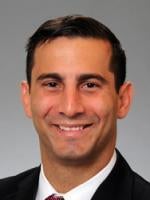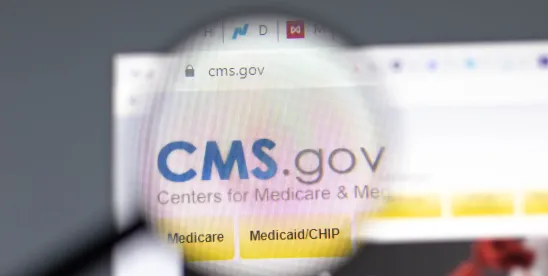On July 14, 2025, the Centers for Medicare and Medicaid Services (CMS) proposed key changes to remote patient monitoring (RPM) and remote therapeutic monitoring (RTM) services reimbursed under the Medicare program. The changes, part of the proposed 2026 Medicare Physician Fee Schedule rule (the Proposed Rule), have been anticipated by digital health providers and stakeholders hoping to see more flexibility for RPM and RTM services.
This article discusses the new changes and proposed codes and explains how to submit public comments on the Proposed Rule.
1. Proposed RPM & RTM Billing for 2-15 Days of Data Transmissions
Historically, device supply codes for both RPM and RTM required at least 16 days of data transmission per 30-day period to be eligible for reimbursement by Medicare. In other words, if data transmission occurs 15 days in a 30-day period, no reimbursement can be claimed. Specifically, this requirement applies to CPT codes 99454 (RPM), 98976 (RTM-respiratory), 98977 (RTM-musculoskeletal), and 98978 (RTM-cognitive behavioral therapy).
CMS now proposes to add new device supply codes for both RPM and RTM that will also allow for data transmission over a period of 2-15 days per 30-day period. The table below lists the proposed new device supply codes for 2026.
| Code | Descriptor |
|
99XX4 (RPM) |
Remote monitoring of physiologic parameter(s) (e.g., weight, blood pressure, pulse oximetry, respiratory flow rate), initial: device(s) supply with daily recording(s) or programmed alert(s) transmission, 2-15 days in a 30-day period |
|
99454 (RPM) |
Remote monitoring of physiologic parameter(s) (e.g., weight, blood pressure, pulse oximetry, respiratory flow rate), initial; device(s) supply with daily recording(s) or programmed alert(s) transmission, 16-30 days in a 30-day period |
|
98XX4 (RTM – respiratory) |
Remote therapeutic monitoring (e.g., therapy adherence, therapy response, digital therapeutic intervention); device(s) supply for data access or data transmissions to support monitoring of respiratory system, 2-15 days in a 30-day period |
|
98976 (RTM – respiratory) |
Remote therapeutic monitoring (e.g., therapy adherence, therapy response, digital therapeutic intervention); device(s) supply for data access or data transmissions to support monitoring of respiratory system, 16-30 days in a 30-day period |
|
98XX5 (RTM – musculoskeletal) |
Remote therapeutic monitoring (e.g., therapy adherence, therapy response, digital therapeutic intervention); device(s) supply for data access or data transmissions to support monitoring of musculoskeletal system, 2-15 days in a 30-day period |
|
98977 (RTM – musculoskeletal) |
Remote therapeutic monitoring (e.g., therapy adherence, therapy response, digital therapeutic intervention); device(s) supply for data access or data transmissions to support monitoring of musculoskeletal system, 16-30 days in a 30-day period |
|
98XX6 (RTM – cognitive behavioral therapy) |
Remote therapeutic monitoring (e.g., therapy adherence, therapy response, digital therapeutic intervention); device(s) supply for data access or data transmissions to support monitoring of cognitive behavioral therapy, 2-15 days in a 30-day period |
|
98978 (RTM – cognitive behavioral therapy) |
Remote therapeutic monitoring (e.g., therapy adherence, therapy response, digital therapeutic intervention); device(s) supply for data access or data transmissions to support monitoring of cognitive behavioral therapy, 16-30 days in a 30-day period |
This change comes after several years of stakeholder feedback that the 16-day billing threshold was not necessary or appropriate in certain clinical use cases. The new codes would provide a new pathway for billing in scenarios where patients do not meet the 16-day requirement but are provided shorter monitoring periods that are clinically meaningful.
It is notable that CPT Codes 99453 (RPM) and 98975 (RTM) covering the initial set-up and patient education services would still require 16 days of data transmission during the 30-day period to be eligible for reimbursement.
If this rule is finalized as proposed, RPM and RTM providers would need to implement systems and processes to track which patients meet which data transmission threshold in the applicable 30-day period and ensure treatment plans continue to meet Medicare’s “reasonable and necessary” standard and are supported by robust documentation.
2. Uncertainty Around Reimbursement Amount for Device Supply Codes
CMS is proposing the same reimbursement rate for the new codes covering 2–15 days of data as the existing codes that cover 16 days of data. This means payment would be the same regardless of whether data is transmitted for two days or for 16+ days within any 30-day period.
However, CMS rejected the American Medical Association’s (AMA) Relative Value Scale Update Committee (RUC) recommendations for valuing the new and existing device supply codes, citing insufficient survey data from the RUC to appropriately value the codes. Instead, CMS proposes using Hospital Outpatient Prospective Payment System (OPPS) cost data to value these services. The proposal marks a potential shift in how remote care services are evaluated and valued. This means, although the proposed changes represent a clear expansion of coverage, future adjustments are likely as more data is collected and reviewed, so providers should expect continued flux in the reimbursement rates.
It also is notable that CMS is proposing to apply contractor pricing for the RTM device supply codes associated with respiratory system monitoring (CPT codes 98XX4 and 98976) and with cognitive behavioral therapy (CPT codes 98XX6 and 98978). Contractor priced status means the value and payment for these RTM codes will be established at the discretion of each local Medicare Administrative Contractor (MAC) and may result in variability in reimbursement rates across jurisdictions. CMS currently sets a national rate for CPT code 98976, so RTM stakeholders may view this proposal as a step backward. If the proposal becomes final, practitioners will need to refer to their local MACs for specific coverage and billing guidelines of CPT codes 98XX4, 98976, 98XX6, and 98978.
3. Proposed RPM & RTM Billing for 2-19 Minutes of Monitoring.
Currently, the RPM and RTM treatment management services codes (CPT 99457 and 98980) can only be billed after at least 20 minutes are spent in a calendar month on activities such as monitoring, data review, and patient coaching activities. In other words, if 19 minutes are spent on such monitoring activities, no reimbursement can be claimed.
CMS is proposing to create new treatment management codes for both RPM and RTM to cover 10–19 minutes of management time in a calendar month. Both codes would still require at least one real-time, interactive communication with the patient or caregiver during the calendar month. The table below lists the proposed new treatment management services codes for 2026.
| Code | Descriptor |
|
99XX5 (RPM) |
Remote physiologic monitoring treatment management services, clinical staff/physician/other qualified health care professional time in a calendar month requiring one real-time interactive communication with the patient/caregiver during the calendar month; first 10 minutes |
|
98XX7 (RTM) |
Remote therapeutic monitoring treatment management services, physician or other qualified health care professional time in a calendar month requiring at least one real-time interactive communication with the patient or caregiver during the calendar month; first 10 minutes |
The addition of these codes effectively would allow for three separate tiers of monitoring time: (1) the first 10-19 minutes; (2) a total of 20-39 minutes; and (3) each additional 20 minutes spent above the first 20 minutes. CMS proposes the reimbursement for CPT codes 99XX5 and 98XX7 to be at roughly half the rate of the existing 20-minutes codes (99457 and 98980).
CMS also is rejecting a recommendation from the RUC to cut the reimbursement value for the existing 20-minute codes (99457, 99458, 98980. 98981) and instead proposes to maintain their current valuation.
4. Make Your Voice Heard
Providers, technology companies, and virtual care entrepreneurs interested in remote monitoring should consider providing comments to the Proposed Rule. Comments may address not only CMS’ proposals or clarifications but can also request responses on issues CMS did not address. CMS is soliciting comments on the Proposed Rule until 11:59 p.m. EDT on September 12, 2025. Anyone may submit comments (anonymously or otherwise) via electronic submission at https://www.regulations.gov/document/CMS-2025-0304-0009. Alternatively, commenters may submit comments by mail to:
- Regular Mail: Centers for Medicare & Medicaid Services, Department of Health and Human Services, Attention: CMS-1832-P, P.O. Box 8016, Baltimore, MD 21244-8016.
- Express Overnight Mail: Centers for Medicare & Medicaid Services, Department of Health and Human Services, Attention: CMS-1832-P, Mail Stop C4-26-05, 7500 Security Boulevard, Baltimore, MD 21244-1850.
If submitting via mail, please be sure to allow time for comments to be received before the closing date.
5. Conclusion
The Proposed Rule advances the ability of clinicians to leverage remote monitoring technologies to improve the patient care experience and get paid for doing so by offering greater flexibility and enabling shorter-term monitoring and patient engagement. Notably, the introduction of new 10-minute codes for RPM and RTM services better aligns with clinical workflows, as many tasks, such as responding to alerts or conducting patient outreach, are often completed in under 20 minutes. However, regulators have warned that these changes may be vulnerable to abuse (e.g., billing with minimal data), and increased auditing and enforcement activity related to RPM and RTM should be expected. Thus, careful program management of these services will be crucial. Providers using these codes should maintain robust documentation supporting medical necessity, maintain detailed time logs that clearly show clinical engagement, and ensure compliance with all billing requirements.
We will continue to monitor CMS and guidance for developments that impact the use, reimbursement, and compliance landscape for RPM and RTM services.





 />i
/>i

